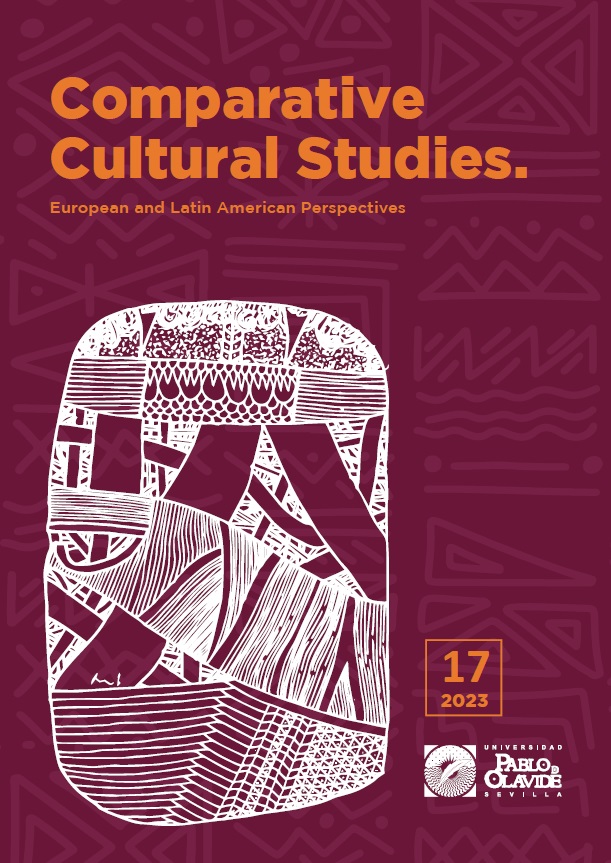Panela de Mão, o Handpan brasileiro: uma perspectiva artística a partir de duas marchas compostas por Chiquinha Gonzaga e adaptadas para o Duo Piano & Panela
DOI:
https://doi.org/10.46661/ccselap-14298Parole chiave:
Panela de mão, handpan, ritmos brasileiros, decolonialidade, marcha, Chiquinha GonzagaAbstract
O instrumento popularmente conhecido como handpan foi criado no ano 2000 na Suíça com o nome de hang. Na sua curta história de vida, ele já foi chamado de várias formas, dentre elas, de hang drum, porém os criadores proibiram o tambor em sua identificação. Considerando tal contexto, este artigo apresenta a panela de mão. Não somente uma tradução para o português, mas o resgate decolonial do tambor ao instrumento. Como proposta artística do desenvolvimento do handpan brasileiro, foram utilizadas duas marchas compostas por Chiquinha Gonzaga para servirem de exemplo das amplas possibilidades técnicas e artísticas que este instrumento pode nos oferecer. O Duo Piano & Panela, formado por Reznik e Madeira, é o resultado artístico desta pesquisa que apresenta arranjos inéditos para esta formação.
Downloads
Riferimenti bibliografici
Andrade, H. (1988). A Banda de Música na Escola de Primeiro e Segundo Graus. (Mestrado em Música, Educação Musical). Conservatório Brasileiro de Música, Rio de Janeiro.
Ballestrin, L. (2013). América Latina e o giro decolonial. Revista Brasileira de Ciência Política, (11), 89-117. https://doi.org/10.1590/S0103-33522013000200004
Corbussen, M. (2017). Musical Performances are (not) Artistic Research. Ímpar: online journal for artistic research, Netherlands, 1(1), 5-15.
Diniz, E. (2009). Chiquinha Gonzaga: uma história de vida. Nova ed. rev. e atualizada. Rio de Janeiro: Zahar
Diniz, E. (2011). Ó abre alas. Dobrado carnavalesco, da peça de costumes cariocas NÃO VENHAS!... Acessado em: https://chiquinhagonzaga.com/acervo/?musica=o-abre-alas
Enciclopédia da Música Brasileira: popular, Erudita e Folclórica (1998). Editora: Art/Publifolha.
Gonzaga, Ch. (1899). Ó Abre Alas. Disponível em: https://chiquinhagonzaga.com/wp/o-abre-alas-mesmo-titulo-dois-compositores/
Instituto d'O Passo (2017). Um método de educação musical. Acessado em: https://www.institutodopasso.org/metodo
Nascimento, A. (2019). O Quilombismo: Documentos de uma Militância Pan-Africanista. 3a edição. São Paulo: Editora Perspectiva.
Pam, M. (maio de 2022). Roda(mesa)-redonda (de conversa) de samba(s): Que Brasil é esse? - Perspectivas decoloniais para (re)pensar o repertório (não) presente na academia e a identidade da música brasileira a partir de diferentes tipos de sambas do país. Colóquio PROEMUS UNIRIO 2022, Rio de Janeiro, Brasil. Disponível em https://www.youtube.com/watch?v=-aUImqXIuxE&t=522s. Acesso em 03/06/2022
Paschko, M. (2022). Hang: Um projeto de documentação sobre a PANArt, o hang e outros instrumentos Pang. (Mensaje de blog). Disponível em http://www.hangblog.org/hang/.
Queiroz, L. R. S. (2017). Formação intercultural em música: perspectivas para uma pedagogia do conflito e a erradicação de epistemicídios musicais. Intermeio: Revista do Programa de Pós-Graduação em Educação, UFMS, 23(45), 99-124. Disponível em: <https://periodicos.ufms.br/index.php/intm/article/view/5076>. Acesso em 15 jun. 2022.
Queiroz, L. R. S. (2020). Até quando Brasil: Perspectivas decoloniais para (re)pensar o ensino superior em música. PROA: Revista de Antropología e Arte, 10 (1), 153-199. https://doi.org/10.20396/proa.v10i1.17611
Reznik, F. (2022) . Ó Abre Alas (Chiquinha Gonzaga), por Duo Piano & Panela. Acessado em https://www.youtube.com/watch?v=24GJpqLJ9N8
Rohner, F. e Schärer, S. (2013). Hang: Sound sculpture. Bern, Switzerland: PANArt, 2013.
Rohner, F. e Schärer, S. (2019). Hang - a new musical instrument - a brand - many misunderstanding: A contribution to clarification. In: PANArt homepage. Disponível em https://panart.ch/en/articles/hang-a-new-musical-instrument-a-brand-many-misunderstandings
Downloads
Pubblicato
Come citare
Fascicolo
Sezione
Licenza
Copyright (c) 2023 Felipe Reznik, Maria Teresa Madeira

TQuesto lavoro è fornito con la licenza Creative Commons Attribuzione 4.0 Internazionale.
Questa licenza consente a terzi di condividere (copiare e ridistribuire il materiale in qualsiasi mezzo o formato) e adattare (remixare, trasformare e creare dal materiale per qualsiasi scopo, anche commerciale), a condizione che sia riconosciuta la paternità e la prima pubblicazione in questa rivista (La Rivista, DOI del lavoro), che sia fornito un link alla licenza e che sia indicato se sono state apportate modifiche al lavoro.







